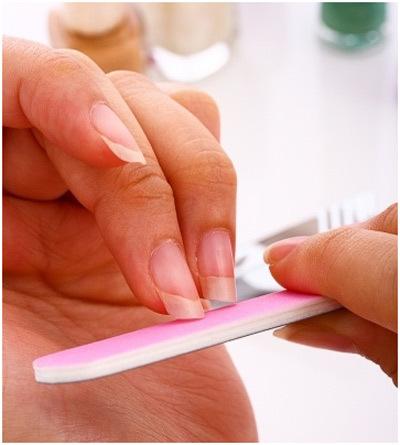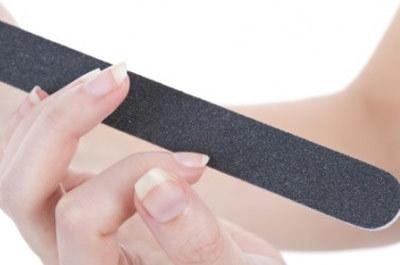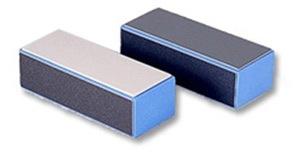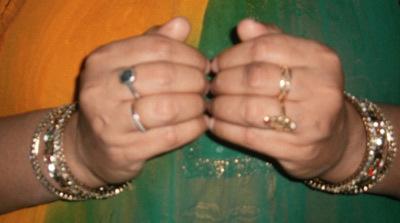With a good buffer board, you’re already halfway towards having smooth, strong nails.
You know about trimming your nails, but we bet you have wondered what is nail buffing exactly. It uses a buffer board to file your nails, making sure it remains healthy, sturdy, and shiny for a long period. Sometimes, we tend to live with chipped or broken nails hoping they will grow out properly without care. But you will only worsen your nail health by doing that. So, get a good buffer board and get to work right now! Scroll down.
What Is Nail Buffing?
Nail buffing means polishing or rubbing your nails with a buffer board (nail buffer) that’s made of fine grit. This leaves your nails looking more consistent and shiny.
How To Buff Nails At Home?

- Make sure your nails are dry and clean – wet nails can break or chip easily
- Use a nail polish remover to remove any traces of nail paint
- Trim your nails to a desired length
- File your nails in a shape that you want – round, square or whatever suits you.
- Get a nail buffer – this can either be an emery board or a buffing board, and will have different textures on the sides.
- Using the roughest side of the buffer, buff your nails gently, moving the buffer from side-to-side.
- Try and remove the roughness from your nails first.
- Take a soft cotton cloth to wipe off the extracts
- Now take the texture that’s a little less rough and repeat the steps in a gentle, side-to-side motion.
- Take the smoothest part of the buffer and buff your nails until they look shiny – as if you’ve applied a clear coat.
- Wipe off your nails with the cotton cloth
How Often to Buff Nails?
You should ideally buff your nails about once a month, but in case your nails aren’t rough, or if you often wear a coloured nail polish and do not really need that extra shine on nails, you can take a longer time in between buffing.
Different Nail Buffing Tools In The Market
1. Emery Board:

2. Nail Buffer Board:
These are generally made of fine-grade sand-paper and help smoothen out any rough edges on nails.
3. Cute Nail Buffers in Various Shapes:
These are generally smaller than the regular boards, can be popped inside your tote and are easy to use.
4. Nail Buffing Blocks:

These are 3-dimensional buffing blocks that are rectangular in shape and come with a different texture on both sides to help smoothen out rough edges and bring a shine on the nails.
5. Nail Buffer Strips:

These are more like papery strips made of sand-paper and do the same work as the emery board or nail buff, but are used more as a replacement in case you’re not carrying those around with you. Great for travel.
[ Read: 11 Must Have Manicure And Pedicure Tools ]
Does Nail Buffing Increase Hair Growth?

There is no concrete proof that nail buffing increases hair growth. However, it is a proven fact that rubbing the nails of your left and right hand together can actually lead to hair growth.
A Few Things to Keep in Mind About Nail Buffing
- Rubbing thumbnails will increase growth of facial hairs, so don’t rub your thumbs
- Do not rub your nails during pregnancy as it can cause uterine contractions and lead to high blood pressure
- Avoid during surgical conditions
- Avoid in case of any skin infections
- Avoid if nails are brittle
- Avoid if you are currently suffering, or have suffered in the past from hypertension, as this can lead to increased blood pressure
- Do not overdo, as it can harm nails
- Do this only for 5-10 minutes a day, twice a day for better results, but not more
Infographic: Best Nail Buffing Tools And Tips
Your nails are as important as your skin and hair. They need to be taken care of properly to ensure they are healthy and strong. Here, we have made a list of the best nail buffing tools and also added a few important tips you should keep in mind. Check out the infographic below to learn further.
![best nail buffing tools and tips [infographic]](https://cdn2.stylecraze.com/wp-content/uploads/2023/01/Best-Nail-Buffing-Tools-And-Tips.jpg)
Illustration: StyleCraze Design Team
If you have ever suffered a nail injury, you must know how painful it can be. However, just because they are dead cells, you cannot neglect them. Regular nail buffing should be an essential part of your routine to maintain your nails’ good health, shape, and shine. This article tells you what nail buffing is and guides you through steps about how to do it yourself at home. So, get yourself some nail buffing tools – you can refer to the list of different types of buffing tools above and get started. Also, note the precautions we have shared to avoid buffing your nails under certain circumstances.
Frequently Asked Questions
Does buffing strengthen nails?
Yes. Buffing improves the blood circulation under the nail bed, boosting nail growth and shine. However, you shouldn’t buff more than once a month, as overdoing it can make your nails brittle.
Should I buff my nails before gel polish?
Yes. Buffing your nails before applying gel polish ensures that the nail is smooth enough for the application and that the gel can bond with it.
Why do nail salons buff nails?
Nail salons buff nails to cover any ridges and cracks and make the nails look smoothers and shinier.
